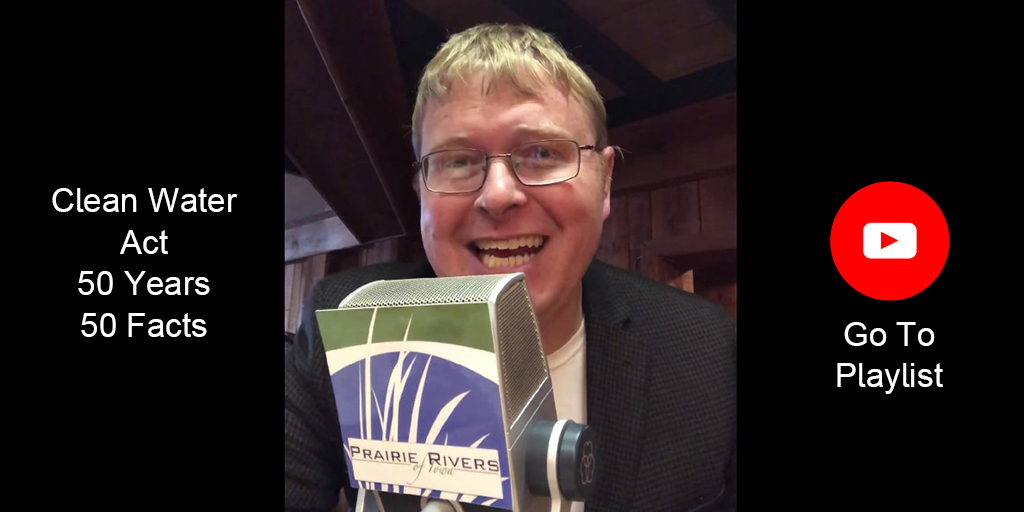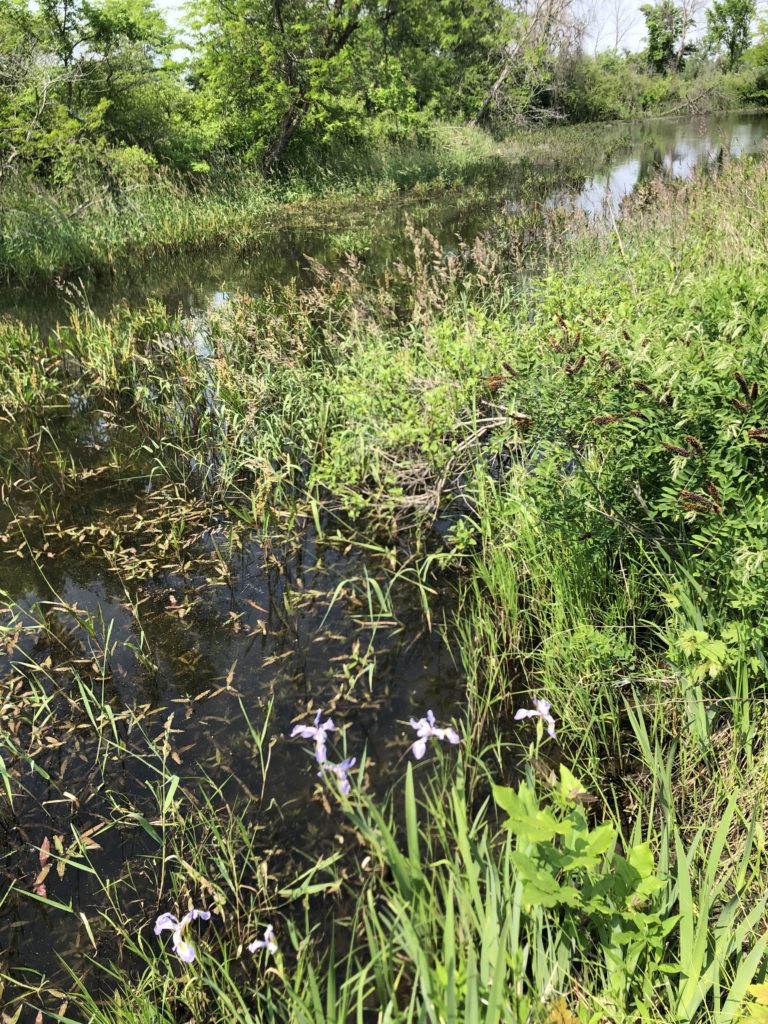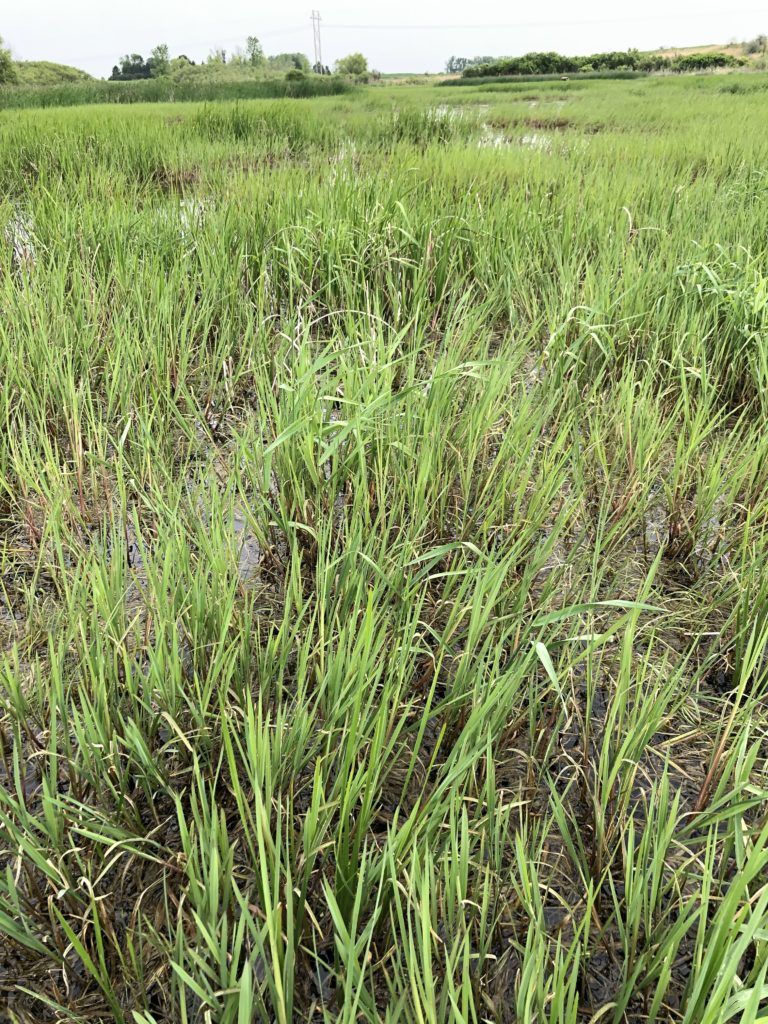We’re almost halfway through our weekly video series “The Clean Water Act: 50 Years, 50 Facts” which tries to explain the consequential and complex environmental law in 90 second chunks accompanied by some rock and pop favorites from the ’70s and ’80s that I’ve adapted to include lyrics about environmental law. On May 25, a major decision by the Supreme Court (Sackett v. EPA) reshaped the legal landscape, so our episodes in June will focus on Section 404 of the Clean Water Act and the definition of “waters of the United States” to give you some context.
I have mixed feelings about this area of law, informed by an entry-level job at Wisconsin DNR that involved documenting wetland losses and auditing wetland fill permits. In my opinion, decades of litigation and Congressional gridlock have resulted in some compromises which satisfy no-one: the system is confusing and expensive for developers and landowners but doesn’t do enough to protect aquatic ecosystems from “death by a thousand cuts.” If there was a constituency for “environmental federalism”, maybe I could see a path forward, but opposition to federal environmental regulation generally goes hand in hand with opposition to environmental protection at the local and state level. In Idaho, the Sackett’s neighborhood is one of many being built in wetlands along Priest Lake with the approval of a conservative county government. Here in Iowa, the legislature has recently considered bills that would have limited the ability of county governments and land trusts to purchase sensitive natural areas for parks, and limited the ability of cities to regulate development for the purposes of flood control.
But enough about my personal opinions, let’s talk legal opinions. While all nine justices agreed to overturn the Circuit Court’s decision in favor of the Sacketts, four justices thought the majority went too far in limiting the scope of the Clean Water Act. A few choice quotes from the concurring opinions in Sackett v. EPA (with legal citations removed for brevity) really help to illustrate what’s at stake.
From Justice Kavanaugh’s concurrence, joined by Justices Kagan, Sotomayor, and Jackson:
The Clean Water Act generally prohibits dumping dredged or fill material without a permit into the “waters of the United States.” The “waters of the United States” include wetlands that are “adjacent” to waters covered by the Act—for example, wetlands that are adjacent to covered rivers or lakes. The question in this case is whether the wetlands on the Sacketts’ residential property are adjacent to covered waters and therefore covered under the Act.
I agree with the Court’s reversal of the Ninth Circuit. In particular, I agree with the Court’s decision not to adopt the “significant nexus” test for determining whether a wetland is covered under the Act. And I agree with the Court’s bottom-line judgment that the wetlands on the Sacketts’ property are not covered by the Act and are therefore not subject to permitting requirements.
I write separately because I respectfully disagree with the Court’s new test for assessing when wetlands are covered by the Clean Water Act. The Court concludes that wetlands are covered by the Act only when the wetlands have a “continuous surface connection” to waters of the United States—that is, when the wetlands are “adjoining” covered waters…
Recall again how the 1977 Act came about. In 1975, the Army Corps concluded that the 1972 Act’s coverage of “waters of the United States” included “adjacent” wetlands. In 1977, Congress adopted a new permitting program for a category of “waters of the United States.” Congress allocated to the Federal Government exclusive authority to issue Clean Water Act permits for dumping dredged or fill material into certain “waters of the United States,” “including wetlands adjacent thereto.” … Congress’s 1977 decision was no accident. As this Court has previously recognized, “the scope of the Corps’ asserted jurisdiction over wetlands”—including the Corps’ decision to cover adjacent wetlands—“was specifically brought to Congress’ attention” in 1977, “and Congress rejected measures designed to curb the Corps’ jurisdiction.” …
The eight [presidential] administrations since 1977 have maintained dramatically different views of how to regulate the environment, including under the Clean Water Act. Some of those administrations promulgated very broad interpretations of adjacent wetlands. Others adopted far narrower interpretations. Yet all of those eight different administrations have recognized as a matter of law that the Clean Water Act’s coverage of adjacent wetlands means more than adjoining wetlands and also includes wetlands separated from covered waters by man-made dikes or barriers, natural river berms, beach dunes, or the like…
The difference between “adjacent” and “adjoining” in this context is not merely semantic or academic. The Court’s rewriting of “adjacent” to mean “adjoining” will matter a great deal in the real world. In particular, the Court’s new and overly narrow test may leave long-regulated and long accepted-to-be-regulable wetlands suddenly beyond the scope of the agencies’ regulatory authority, with negative consequences for waters of the United States. For example, the Mississippi River features an extensive levee system to prevent flooding. Under the Court’s “continuous surface connection” test, the presence of those levees (the equivalent of a dike) would seemingly preclude Clean Water Act coverage of adjacent wetlands on the other side of the levees, even though the adjacent wetlands are often an important part of the flood-control project…
The Court’s erroneous test not only will create real-world consequences for the waters of the United States, but also is sufficiently novel and vague (at least as a single standalone test) that it may create regulatory uncertainty for the Federal Government, the States, and regulated parties. … How does that test apply to the many kinds of wetlands that typically do not have a surface water connection to a covered water year-round—for example, wetlands and waters that are connected for much of the year but not in the summer when they dry up to some extent? How “temporary” do “interruptions in surface connection” have to be for wetlands to still be covered?
From Justice Kagan’s concurring opinion, joined by Justices Sotomayor and Jackson:
[M]ake no mistake: Congress wrote the statute it meant to. The Clean Water Act was a landmark piece of environmental legislation, designed to address a problem of “crisis proportions.” …
Vital to the Clean Water Act’s project is the protection of wetlands—both those contiguous to covered waters and others nearby. As this Court (again, formerly) recognized, wetlands “serve to filter and purify water draining into adjacent bodies of water, and to slow the flow of surface runoff into lakes, rivers, and streams.”
At the same time, wetlands play a crucial part in flood control (if anything, more needed now than when the statute was enacted). And wetlands perform those functions … not only when they are touching a covered water but also when they are separated from it by a natural or artificial barrier—say, a berm or dune or dike or levee….
Today’s majority, though, believes Congress went too far. … Congress, the majority scolds, has unleashed the EPA to regulate “swimming pools and puddles,” wreaking untold havoc on “a staggering array of landowners.” Surely something has to be done; and who else to do it but this Court? It must rescue property owners from Congress’s too-ambitious program of pollution control.
As the majority concedes, the statute “tells us that at least some wetlands must qualify as ‘waters of the United States.’” … It relies as well on a judicially manufactured clear-statement rule. When Congress (so says the majority) exercises power “over private property”—particularly, over “land and water use”—it must adopt “exceedingly clear language.” There is, in other words, a thumb on the scale for property owners—no matter that the Act (i.e., the one Congress enacted) is all about stopping property owners from polluting. ….
A court may, on occasion, apply a clear-statement rule to deal with statutory vagueness or ambiguity. But a court may not rewrite Congress’s plain instructions because they go further than preferred. That is what the majority does today in finding that the Clean Water Act excludes many wetlands (clearly) “adjacent” to covered waters. …
And still more fundamentally, why ever have a thumb on the scale against the Clean Water Act’s protections? … Today’s pop-up clear-statement rule is explicable only as a reflexive response to Congress’s enactment of an ambitious scheme of environmental regulation. It is an effort to cabin the anti-pollution actions Congress thought appropriate. … And that, too, recalls last Term, when I remarked on special canons “magically appearing as get-out-of-text-free cards” to stop the EPA from taking the measures Congress told it to. There, the majority’s non-textualism barred the EPA from addressing climate change by curbing power plant emissions in the most effective way. Here, that method prevents the EPA from keeping our country’s waters clean by regulating adjacent wetlands. The vice in both instances is the same: the Court’s appointment of itself as the national decision-maker on environmental policy….
Because that is not how I think our Government should work—more, because it is not how the Constitution thinks our Government should work—I respectfully concur in the judgment only.





